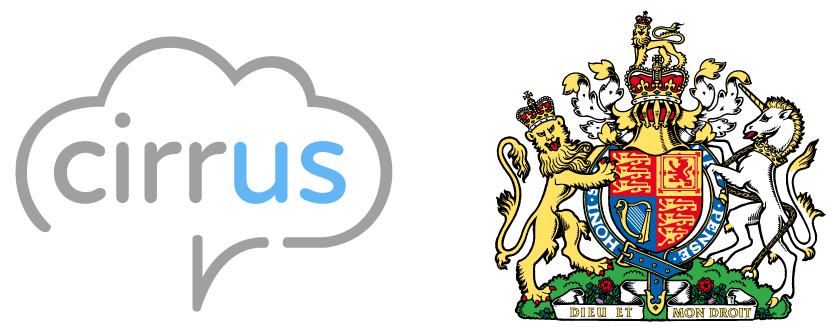Home » Best Practice Tips to Improve First Call Resolution (FCR)
When you call a customer service line with a pressing issue, you seek swift assistance, and what you truly desire is that your concern will be handled in a single call. That’s the power of First Call Resolution (FCR) – the pinnacle of customer service excellence. In today’s fiercely competitive business landscape, FCR is the game-changer that separates industry leaders from the rest.
So, how can you and your call centre achieve and excel in delivering remarkable FCR results? This comprehensive guide will provide you with the strategies and insights you need to make every customer interaction a seamless and satisfying experience. Whether you’re a seasoned professional in the field or just starting your journey in customer service, the keys to FCR success await you.
What is First Call Resolution (FCR)?
First Call Resolution, or FCR, refers to a simple yet transformative concept in the realm of customer service. It’s about effectively resolving your customers’ concerns during their first interaction with your support team.
Just imagine your client has an issue with your product, and they call to discuss it. If their problem is addressed immediately without them needing to call again, you’ve achieved what is known as first-call resolution.
So why is FCR so critical?
Achieving high FCR rates means achievement of two key factors: efficient handling of customer interactions, and robust solutions that address customer needs. This powerful combination supports satisfied customers and also drives better business outcomes, including:
- Cost-savings through reduced repeat contacts
- Increased opportunities for cross-selling within resolved calls.
Mastering FCR isn’t something that happens overnight, though. There are strategies and best practices for harnessing its full potential.
Benefits of Improving First Call Resolution
One crucial factor in a call centre’s success is the FCR rate. Boosting this vital metric delivers many benefits that directly impact brand reputation, operational costs, and overall sales.
1. Improved CSAT Scores
The first on our list of significant improvements is higher Customer Satisfaction (CSAT) scores. When a customer can get their problems solved in one go without needing to call again, they tend to be more satisfied with the service received. In fact, research indicates that over 90% of customers actually expect their problem to be resolved within their first call. When that happens, their increased satisfaction levels translate into positive reviews and word-of-mouth promotion, enhancing your brand reputation.
2. Reduced Operational Costs
Companies frequently overlook how small efficiencies can significantly impact profitability. Quick resolution reduces call time and the average number of interactions needed for each problem fix, resulting in lower operational costs. Reducing simultaneous calls also minimises network traffic that can lead to system failure — an unplanned expense every business tries to avoid.
3. Effective Cross-Selling Opportunities
Once issues are settled promptly on the first call, representatives often have extra time before concluding an interaction. This period can then be used strategically for cross-selling and up-selling opportunities for increasing revenue without significant effort.
4. Decreased Customer Churn
Lastly but most importantly, improving FCR rates leads to reduced customer churn with the ultimate goal being long-term customer retention. It’s been reported that 83% of customers who have issues responded to and resolved showed higher loyalty to the company involved.
Boosting FCR should not only be seen as a means of improving operational performance but as a powerful tool for boosting customer loyalty, augmenting revenue streams, and surpassing financial objectives.
How to Calculate FCR in a Call Centre
To calculate FCR, you first need to understand its definition. Put simply, it refers to the percentage of calls resolved during an initial interaction, meaning the customer didn’t have to call back for the same issue.
To calculate this metric:
- Identify and count the total number of calls resolved upon first contact with your agents in a specific period, eg 20 calls per month
- Aggregate the total volume of calls handled during the same interval , eg 100 calls that month
- Divide the total number of first interactions that led to a successful resolution by the overall number of calls handled, and multiply by 100, in this case 20%. This is your FCR rate.
It’s important to remember that determining what qualifies as “resolved” can vary from business to business, so make sure your team is clear on this definition.
Monitoring this indicator is vital as it depicts your agents’ efficacy and reflects customer satisfaction levels – both invaluable insights for any call centre striving for optimisation.
An increased focus on achieving higher FCR helps reduce repeat callers, leading to improvement in operational efficiencies as well.
According to analysis, over 40% of call centres list FCR measurement as their top-ranking analytics priority. It greatly affects both cost structures and client satisfaction levels, and understanding proper FCR calculation is an integral part of best practice tips for improving FCR.
What is a Good First Call Resolution Rate?
When talking about FRC, it means solving customer queries at the very first point of contact. But how do we measure or define what constitutes a good FCR rate?
There isn’t a one-size-fits-all answer due to the varying nature and complexity of calls. However, experts suggest aiming for an FCR of around 80% as a reasonable benchmark.
Achieving that could be challenging, particularly if your business manages highly complex technical inquiries. Yet it’s worth noting that an upward trend in your FCR rates indicates worthwhile improvements.
Examining multiple industry studies, it appears the average FCR rate hovers between 70% and 75%, highlighting just how complex customer-caller scenarios can get. Although an 80% target doesn’t always reflect the industry standard, it’s an ambitious yet attainable goal to motivate your team’s efforts.
Bear in mind that setting ambitious FCR objectives and using them as a motivating tool could encourage agents to resolve matters during the first call and equip them with confidence when navigating difficult customer scenarios. As Cirrus CEO Jason Roos said: “When you make agents feel truly valued, it transforms customer interactions.”
Don’t let lower averages deter you from pursuing better results. All efforts contribute significantly towards overall performance enhancement and customer satisfaction.
While defining a “good” FCR rate may be tricky due to diverse business models, attaining higher rates should be viewed as more than merely achieving KPIs. It’s about improving service quality and meeting consumer expectations – two essentials for any successful business today.
Challenges of Improving FCR Rate
Enhancing your FCR won’t happen overnight, as it’s a process that comes with various challenges.
One major hurdle is often the lack of clarity around the meaning of FCR in organisations, which can potentially lead to ineffective FCR-boosting strategies. Many companies struggle to fully grasp what it means to resolve customer issues during the initial interaction, mistakenly equating this with speed rather than efficiency or quality.
Next up is identifying any cause that might be responsible for distorting FCR metrics. This could range from matters as simple as technical glitches to more intricate problems such as poor training or inadequate knowledge bases, contributing to calls bouncing around without reaching prompt resolutions.
Furthermore, there’s a constant need for keeping agents properly trained and updated on products or services. This can quickly become onerous given the rapid pace of technological evolution today. Falling behind on this front means risking lower FCR rates.
Lastly, it can be challenging to measure FCR correctly. While it may seem simple in theory – simply tracking situations resolved during first contact – in practice, accounting for every variable can be tricky. Determining if failed resolutions are due to agent performance or circumstances beyond their control requires careful analysis.
However, by recognising these challenges and taking active measures, you’re already halfway towards strategising effective solutions that aim at enhancing our FCR metrics and overall customer satisfaction. Ultimately, resolving inquiries quickly and efficiently means happier customers.
Best Practices for Improving Your FCR
As we examine the core elements of improving FCR, let’s look at some best practices from industry experts.
1. Set a Benchmark for Future Analysis
Start with an initial FCR benchmark that will help future analysis and comparison. It’ll depend on key factors such as the nature of your business or clientele, modes of customer interaction, and level of issue complexity. It will enable you to gauge progress in realistic terms, and lay the groundwork for improvement.
2. Identify the Root Cause of Low FCR Rates
Boosting your FCR requires identifying what impediments exist at present. What lurks behind inadequate FCR numbers? Be mindful of repeat calls that result from unresolved issues, unnecessary transfers, or lack of agent knowledge or training.
3. Maintain Your Knowledge Base
A current knowledge base is like a powerhouse for agents aiming to resolve customer queries during the first call. Empower your agents with access to how-to guides, FAQs, product manuals, and similar resources, so they can swiftly provide effective solutions. Remember, with a well-maintained knowledge base you’re halfway toward boosting FCR.
4. Use AI Agent Assists
Today’s technology offers forward-looking options like utilising AI in customer service operations. It can improve overall efficiency and user experience, so take advantage of AI-powered agent assists, which provide real-time guidance while agents help customers resolve their issues.
5. Deploy Skill-Based Call Routing
Directing the right call to the relevant person can make a significant difference. Consider implementing skill-based routing where calls are assigned in line with each agent’s expertise. This would reduce the risks of unnecessary transfers, escalating your FCRs.
6. Provide Thorough Agent Training
Investing in comprehensive training programs for your agents is crucial when trying to boost FCR. Ensure they have extensive understanding of how to troubleshoot common issues and how they must handle escalated ones. Additionally, making them adept at interpersonal communication will only increase their capacity to provide exceptional solutions on the first interaction.
7. Follow Up with Your Unhappy Customers
Don’t lose touch with customers whose queries didn’t get resolved during the first call. Proactively following up shows empathy and aids in turning around negative experiences by providing an opportunity for personalised solutions.
Improving FCR rates isn’t an insurmountable task, it’s more about embracing a customer-centric approach backed by supportive processes reflecting dedication to excellence in customer service operations.
Tips for Improving First Call Resolution
1. Understand Customers’ Needs
The most essential aspect of improving FCR is understanding your customers’ needs. Without knowing what they require, it’s nearly impossible to resolve their problems on the first call. Take the time to listen to them, ask questions when necessary, and show empathy. The better you comprehend their issues, the easier it’ll be to offer relevant and speedy solutions, leading to a higher FCR rate.
2. Find Common Issues for Delayed Resolution
Carefully identify common issues that often lead to delayed resolution of customer complaints or queries. You might discover recurrent technical glitches, limited agent training, or gaps within your product’s functionality, driving multiple callbacks from frustrated customers.
Pinpointing these issues can focus problem-solving efforts, which significantly helps in resolving customer inquiries during the first call. Cirrus achieved this with our customer Premium Credit, where we implemented a Cirrus Contact Centre customer service optimisation solution.
3. Use Segmentation to Filter Common Issues
Another factor to address for superior FCR is leveraging segmentation. By categorising constant pain points by, for example, problem types or customer demographics, tackling them becomes more structured. Consequently, you can assign specialised teams to deal with specific categories, resulting in faster resolutions and improved FCR rates.
4. Offer Robust Self Service Options
Who said that efficient FCR only takes place during calls?
In today’s digital-savvy world, offering sturdy self-service options like FAQ pages, interactive voice response (IVR) systems, or chatbots enables customers to solve their minor problems without even reaching out to an agent, and this can lead to impressive FCR figures.
5. Take More Off the Customer’s Plate
It’s also important to make life easier for your customers. As a service provider, you should take responsibility for troubleshooting rather than expecting more from customers for solutions. By owning up to issues and scheduling follow-up sessions where necessary, chances for achieving higher FCR rates can rise exponentially.
6. Ask Customers if Their Issue is Resolved
It may sound simple, but asking your customers directly if their issue has been resolved before ending the call can dramatically improve your FCR rate. Often, clients hang up feeling dissatisfied as they couldn’t fully articulate their problem or think it wasn’t resolved appropriately, even if it was from the agent’s perspective. Checking in for final validation ensures no room for miscommunication and results in genuinely satisfied customers, leading to excellent FCR figures.
Measuring Your Progress
As part of the process of improving FCR, it’s essential to track progress. You can’t improve what you don’t measure, and tracking is quite significant. This involves two important factors:
- Checking in with your customers
- Encouraging agents to evaluate each other.
1. Touch Base With Customers
The pivotal element in improving FCR is understanding your customer mandate. Regular interactions with the clients help you gauge their satisfaction levels. Their feedback gives a comprehensive insight into the effectiveness of the strategies employed for enhancing first-call resolution.
Start by sending follow-up emails or conducting surveys to collect feedback post-interaction. Endeavour to obtain specific details about their experiences during these touchpoints to find potential areas of improvement.
Did they feel their concerns were adequately addressed? Were these concerns resolved on the first interaction? How would they rate their overall experience?
Their responses will guide improvements in your approach to ensure that concerns are addressed promptly and boost FCR.
2. Ask Agents to Evaluate Each Other
Your frontline agents are instrumental for managing call centre-related issues. They handle customer calls first-hand and have substantial experience and knowledge.
Leverage this expertise by cultivating an environment where agents are motivated to carry out mutual evaluation and regular peer-to-peer reviews. This approach fosters the exchange of ideas and sharing of best practices, enriching individuals and the organisation.
Learning from colleagues who may have different styles or techniques can significantly improve an agent’s skill set, raising FCR rates over time.
Constructive criticism, coupled with recognition of good performance provides an atmosphere conducive to rapid learning and growth while steadily improving FCR figures.
Measuring progress could initially seem daunting but is ultimately worthwhile. It helps improve effectiveness and efficiency within your call centre, strengthening clients’ trust and loyalty.
Are you ready to improve your FCR rating? Call Cirrus today to discuss how we can help.
Related Posts
 Blog
CSAT Scores are in Decline – Now is Your Time to Shine!
Blog
CSAT Scores are in Decline – Now is Your Time to Shine!
CSAT Scores are in Decline – Now is Your Time to Shine!
 Blog
How AI Supercharges ROI in Your Contact Centre
Blog
How AI Supercharges ROI in Your Contact Centre


